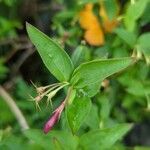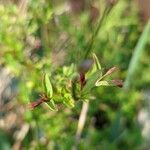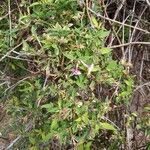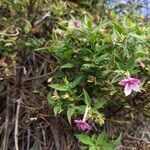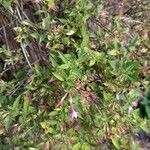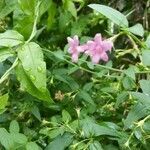Low scrambling or climbing shrub. Stems glabrous or puberulent, angular, stoloniferous. Lvs opposite, simple, entire; petiole 1-4 mm long. Lamina 1.5-4.5-(5) × 0.5-1.5-(3) cm, lanceolate to ovate, usually hairy, especially on veins below, rarely glabrous; base broad-cuneate or rounded; apex acute or mucronate. Cymes terminal on short lateral shoots, 1-3-flowered; pedicels 5-17 mm long, not slender. Calyx 7-9 mm long, glabrous; tube c. 2 mm long; lobes aristate or setose. Corolla deep pink or almost crimson; tube 1-1.2 cm long, funnelform; lobes c. 5 mm long, elliptic, hairy in throat, ciliolate, with rounded apices. Style nearly = tube. Mature berry not seen, globose, black.
